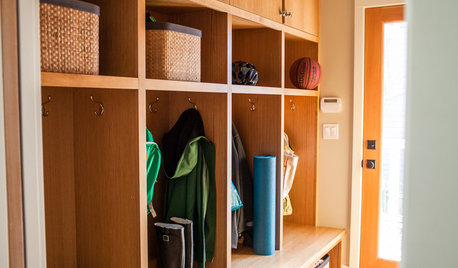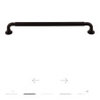Configuring ductwork for least noise
attofarad
12 years ago
Related Stories

HOUSEKEEPINGWhat's That Sound? 9 Home Noises and How to Fix Them
Bumps and thumps might be driving you crazy, but they also might mean big trouble. We give you the lowdown and which pro to call for help
Full Story
BASEMENTSThe 20 Most Popular Basement Photos of 2015
Designers rise to the challenges presented by subterranean spaces
Full Story
KITCHEN DESIGN7 Strategies for a Well-Designed Kitchen
Get a kitchen that fits your lifestyle and your design tastes with these guidelines from an architect
Full Story
BATHROOM DESIGN12 Designer Tips to Make a Small Bathroom Better
Ensure your small bathroom is comfortable, not cramped, by using every inch wisely
Full Story
THE HARDWORKING HOMEMudrooms That Really Clean Up
The Hardworking Home: Houzz readers get down and dirty with their ideas for one of the home’s hardest-working rooms
Full Story
SMALL SPACES11 Design Ideas for Splendid Small Living Rooms
Boost a tiny living room's social skills with an appropriate furniture layout — and the right mind-set
Full Story
GREEN BUILDINGHow to Recycle Your Kitchen
Instead of adding to the junk pile — and paying landfill fees — get rid of old appliances, cabinets and countertops the ecofriendly way
Full Story
BASEMENTSBasement of the Week: Guests Get a Cottage-Like Stay
Converted to a comfy space with a full bath, a bedroom and extra amenities, this Maryland basement is great for visitors and the owner alike
Full Story
MOST POPULAR5 Ways to Hide That Big Air Conditioner in Your Yard
Don’t sweat that boxy A/C unit. Here’s how to place it out of sight and out of mind
Full Story
KITCHEN DESIGNHave Your Open Kitchen and Close It Off Too
Get the best of both worlds with a kitchen that can hide or be in plain sight, thanks to doors, curtains and savvy design
Full StoryMore Discussions








kaseki
attofaradOriginal Author
Related Professionals
Bonita Kitchen & Bathroom Designers · Martinsburg Kitchen & Bathroom Designers · Piedmont Kitchen & Bathroom Designers · Pleasant Grove Kitchen & Bathroom Designers · Springfield Kitchen & Bathroom Designers · South Sioux City Kitchen & Bathroom Designers · Broadlands Kitchen & Bathroom Remodelers · Kuna Kitchen & Bathroom Remodelers · Sicklerville Kitchen & Bathroom Remodelers · Skokie Kitchen & Bathroom Remodelers · Westminster Kitchen & Bathroom Remodelers · Aspen Hill Cabinets & Cabinetry · Buena Park Cabinets & Cabinetry · Homer Glen Cabinets & Cabinetry · Radnor Cabinets & Cabinetrydavidro1
toddimt
attofaradOriginal Author
sombreuil_mongrel
kaseki
attofaradOriginal Author
kaseki
attofaradOriginal Author
kaseki
robertgoulet
kaseki
robertgoulet
robertgoulet
kaseki